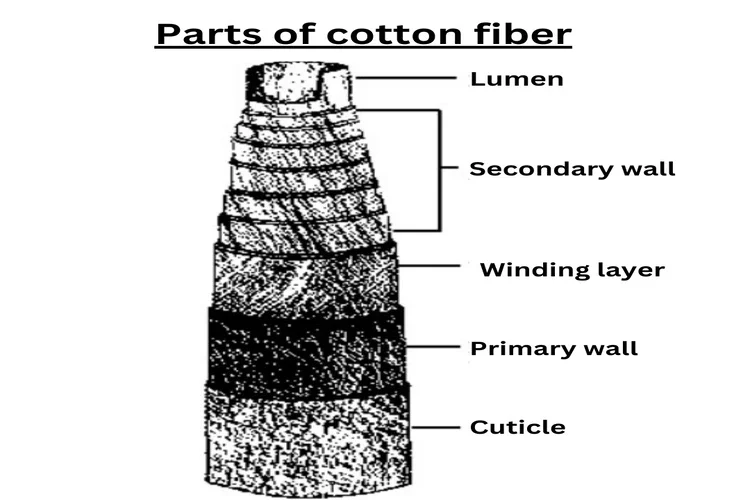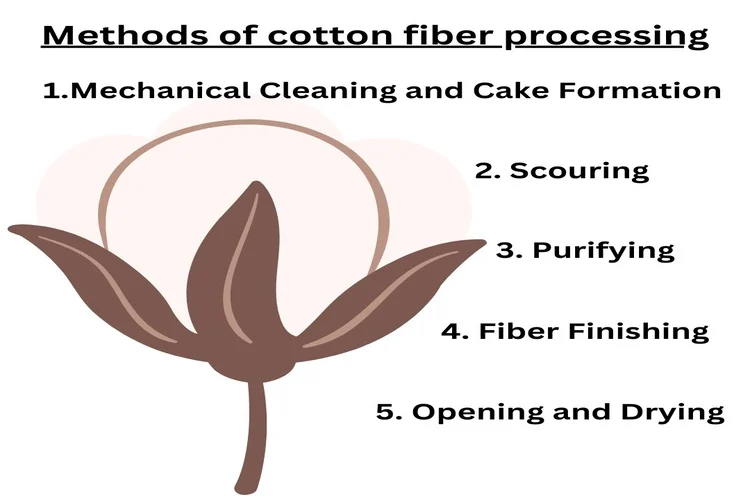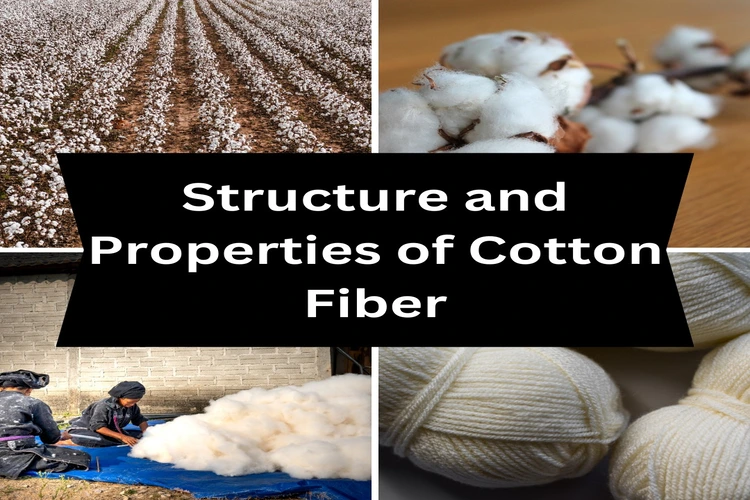Introduction
Cotton, deeply rooted in nature, stands as a fundamental natural material. It originates from the seeds of cellulose-based staple fibers, with lengths spanning from 10 to 65 millimeters and displaying a palette of hues from purest white to the most comforting beige. Enriched with cellulose, cotton proudly claims its throne as the “king of all fibers,” commanding an impressive 50% share in global fiber consumption by weight. In its true form, cotton unfurls as a gentle, downy embrace enfolding seeds nurtured within pods. This remarkable plant, flourishing in tropical climes, demands at least six months of warm, sun-drenched weather to unveil its blossoms and yield the cherished pods.
Cultivation of cotton
The heartland of cotton production encompasses Egypt, the southern United States, India, Brazil, the western and southern shores of America, and the vibrant East Indies. To thrive, cotton requires a continuous stretch of 200 days under warm, moisture-laden skies and bountiful sunlight, as frost poses a significant threat to its well-being. The ideal time for planting falls in the welcoming embrace of March and April. Leading the world in cotton production is the United States, contributing a remarkable 40% or more to the global total. Following in the ranks, India holds the second position, trailing the United States, both as a stalwart producer and a key exporter of this precious fiber.
Climate & soil requirement for cotton fiber
Cotton likes warm and sunny weather. It grows best when it’s not too cold, around 21-27°C, but can handle hot temperatures up to 43°C. However, it doesn’t like it when it’s colder than 21°C. It also prefers places with warm days and cool nights during the fruiting stage for good cotton growth. Cotton grows well in different kinds of soil. In the north, it likes well-drained alluvial soil. In the central areas, it’s okay with deep clayey soil of different depths. In the south, it can grow in black soil and mixed black and red soil. Cotton can handle a bit of salt in the soil, but it doesn’t like it when the soil is too wet and waterlogged. It prefers well-drained soil for the best growth.
Preparation of the land for cotton
In the northern region, they have little time between harvesting wheat and preparing for cotton. After wheat, they water the field and use tractors to level it, creating raised ridges for planting cotton. In the central and southern parts of India, where cotton relies on rain, they plow deep every four years to remove stubborn weeds. They repeatedly use a blade harrow before the pre-monsoon rains to prepare the field. To save water and control weeds, they plant cotton on raised ridges and furrows in dry areas.
Cells of cotton fibers
Cotton fibers are individual cells that are unique because you can see them with your naked eye, and they can grow up to 2 inches long. Out of all the plant cells, domesticated cotton has the longest ones. In just 30 days, cotton fibers become very long. They start as tiny cells in the cotton flower, and about a month later, they fill the seed pods until they burst. To make threads for fabric, they twist these fibers together. Longer fibers are better than shorter ones because they need less twisting and can be woven into finer threads. Thinner threads can make fabrics with more threads per square inch, and these high thread count fabrics, like fine linens, are considered top-notch and cost more than fabrics with fewer, thicker threads. Cotton fibers are short and tube-shaped, typically measuring between 1/2 inch to 2 inches long. They consist mainly of cellulose, made from carbon, hydrogen, and oxygen. After bleaching, cotton becomes nearly pure cellulose, but in its natural state, it contains about 5% impurities.
Physical properties of cotton fibers
- Strength: Cotton fibers are really strong because they have a complex structure made up of about 70% crystalline material.
- Elasticity: Cotton doesn’t stretch much because of its crystalline structure, making cotton fabrics prone to wrinkles and creases.
- Hygroscopic moisture: Cotton doesn’t hold onto moisture like wool or silk; instead, it quickly absorbs and spreads moisture throughout the fabric, making it feel damp.
- Electrical property Cotton’s ability to absorb moisture usually prevents static electricity in cotton fabrics.
- Absorbency: Cotton’s cellulose content makes it great at absorbing fibers.
Thermal properties of cotton fibers
- Drop ability: Cotton doesn’t flow and maintain its shape very well, but the fabric’s weaving can make it better in this regard.
- Resilience: Cotton often wrinkles, but you can reduce this by using wrinkle-resistant treatments.
- Cleanliness and washability: Cotton’s rough surface can gather dust, but it can be washed with hot water and strong soap without harm to the fibers.
- Luster: Natural cotton doesn’t shine, but you can make it shiny by treating it with a process called cotton mercerization, which involves using sodium hydroxide.
- Shrinkage: The fibers don’t shrink naturally, but when they’re stretched during finishing, they tend to relax, causing them to shrink.
- Heat conductivity: The fiber itself usually doesn’t shrink, but when cotton fibers get stretched during the finishing process, they tend to relax, leading to shrinkage.

Parts of cotton fiber
cotton fiber has the following six parts.
- Cuticle: The cuticle is a protective, waxy coating on the fiber that shields it from water, and it has pectins and proteins in it. We remove this layer from the fiber during scouring.
- Primary wall: The primary wall is a thin cell wall made of cellulose and has small strands called fine fibrils that create a network of fine capillaries. These tiny capillaries are known to draw liquids away from larger ones, and they help cotton absorb and dry liquids effectively.
- Winding layer: The S1 layer, also known as the winding layer, is the first layer of secondary thickening. It’s different from the primary wall and the rest of the secondary wall, with fibrils arranged in an open, net-like pattern at angles of 40 to 70 degrees to the fiber axis.
- Secondary wall: The S2 layer, known as the secondary wall, is formed from layers of cellulose and makes up most of the cotton fiber. Additional cellulose layers are added to create this wall when the fiber reaches its maximum width. Fibrils are aligned at angles of 70 to 80 degrees to the fiber’s axis, occasionally changing direction along the fiber’s length. These closely packed fibrils create small capillaries.
- Lumen wall: The S3 layer also called the lumen wall, acts as a protective barrier between the secondary wall and the lumen, and it’s more resistant to specific chemicals than the secondary wall layers.
- Lumen: The lumen is a hollow tunnel inside the fiber. When the fiber is growing, it’s filled with a living protoplast. But as the fiber matures and the cotton boll opens, the protoplast dries up, causing the lumen to naturally collapse, creating a central void in each fiber.

Methods of cotton fiber processing
- Mechanical Cleaning and Cake Formation: Cotton through a machine to untangle the dense fiber tufts from the cotton bales. These tufts go into a hopper, where machines separate them carefully. The freed fibers then go through advanced cleaning technologies known as EVŌC (Enhanced Visual, Opening, Cleaning system). These technologies are designed to remove a lot of non-lint materials like stalks, stems, leaves, and other unwanted bits. Although we aim to remove all the non-lint stuff, it’s tricky to get rid of every bit using only machines. The next steps happen in big vessels called kiers, which can heat and pressurize the system to speed up the wet cleaning process. The cotton is soaked with water and squeezed into large cakes with a hole in the middle. These cotton cakes are then gently lowered into the kier and tightly sealed.
- Scouring: Scouring is crucial to clean the fabric and get it ready for the next steps. It involves treating the fiber with a special chemical solution to remove dirt, oil, and unwanted stuff. After that, the cotton fiber is thoroughly rinsed with water to remove any leftover chemicals. Once it’s rinsed, the cotton fibers are dried and ready for use in making things. Scouring is an essential part of making cotton fiber because it ensures the material is completely clean and free from anything that could harm the final product’s quality.
- Purifying: The raw cotton is soaked in warm, soapy water and agitated. The agitation removes lint and unwanted bits from the fibers, and the soap helps break down dirt. After that, the cotton is rinsed and left to dry.
- Fiber Finishing: Even after removing the natural fiber finish, the fibers tend to stick together, so they add a lubricating fiber finish. You can choose from different types to match your needs. They pump these finish solutions through the fibers to apply the right amount, and when it’s enough, they remove the extra.
- Opening and Drying: In the final stage, they spread out the damp cotton into fluffy cotton fibers and dry them to the moisture level the customer wants. After balancing the cotton, they carefully check the moisture and note it on the labels for each bale. This ensures that Barnhardt has thoroughly processed the cotton to provide top-notch quality for our valued customers.
You may also like:
- Explore The Different Types Of Textile Fibers
- Identification of Textile Fibers
- Kapok Fiber: Properties, Structure and Production Process
- What is Linen Fiber? Properties, Structure, and How It Made?
- What is Jute Fiber? Properties, Advantages and Disadvantages.
- What is Hemp Fiber? Properties, Advantages and Disadvantages.
- What is Ramie Fiber? Properties, Advantages and Disadvantages.
- What is Sisal Fiber? Properties, Structure, and How It Made?
- Types of yarn
Share this Article!

